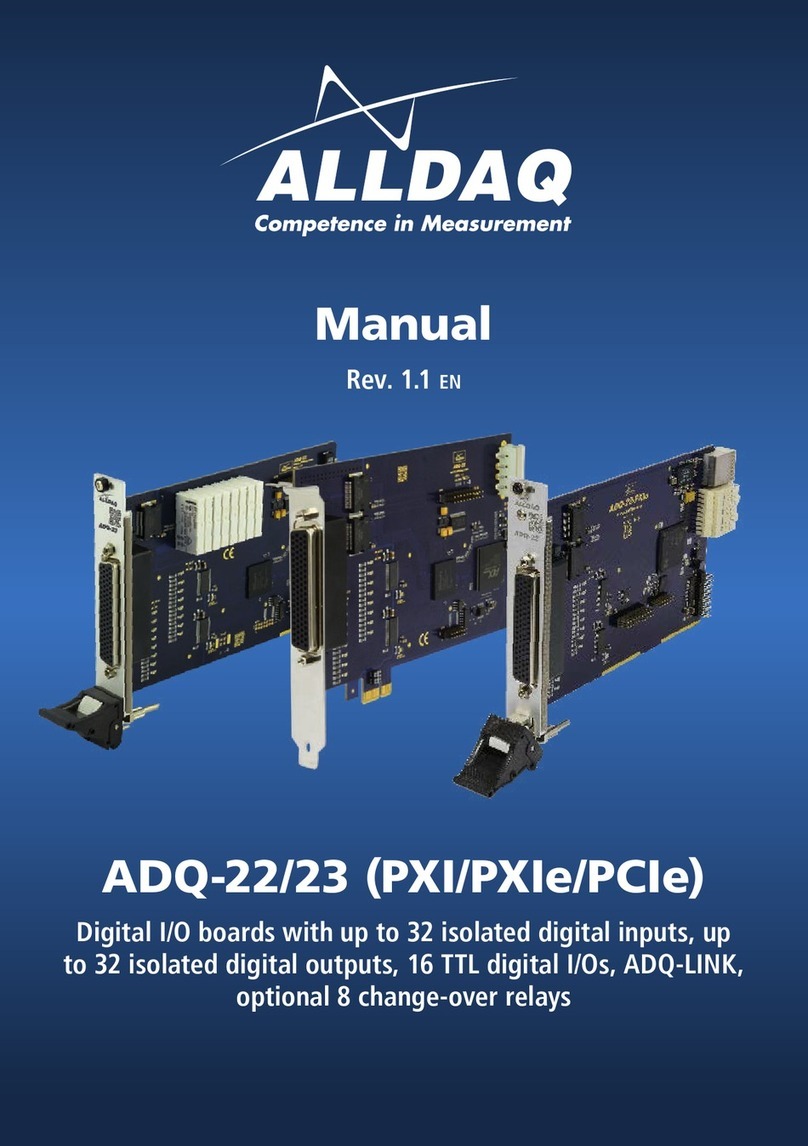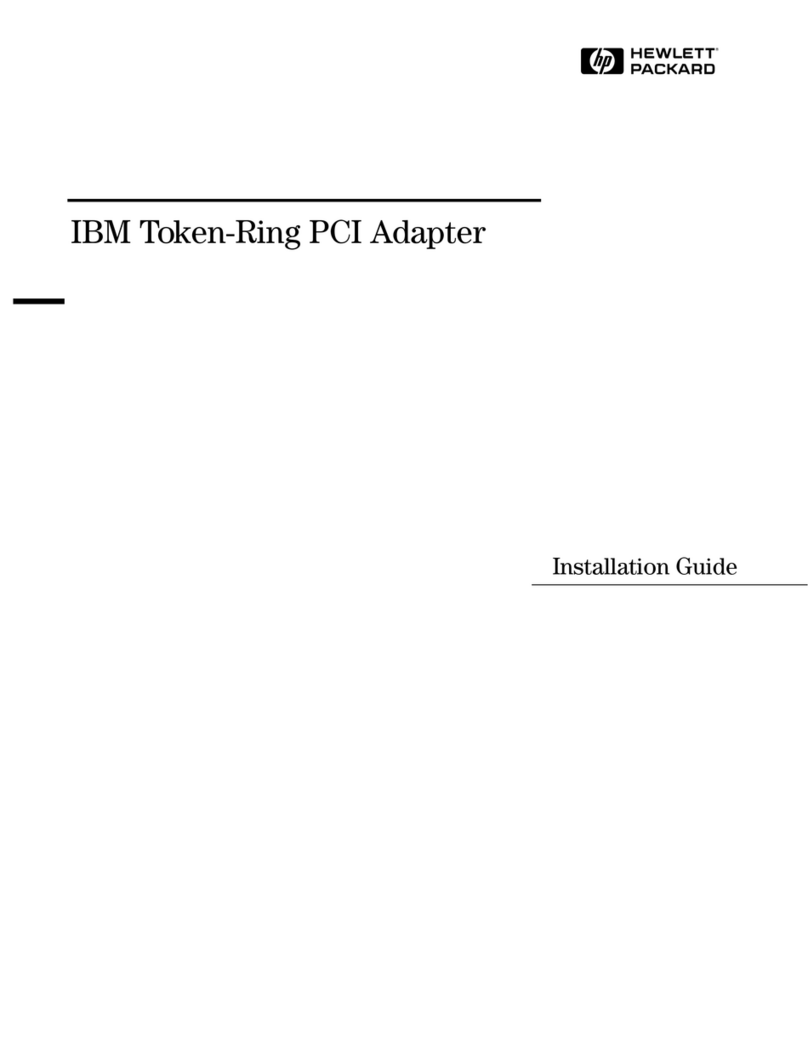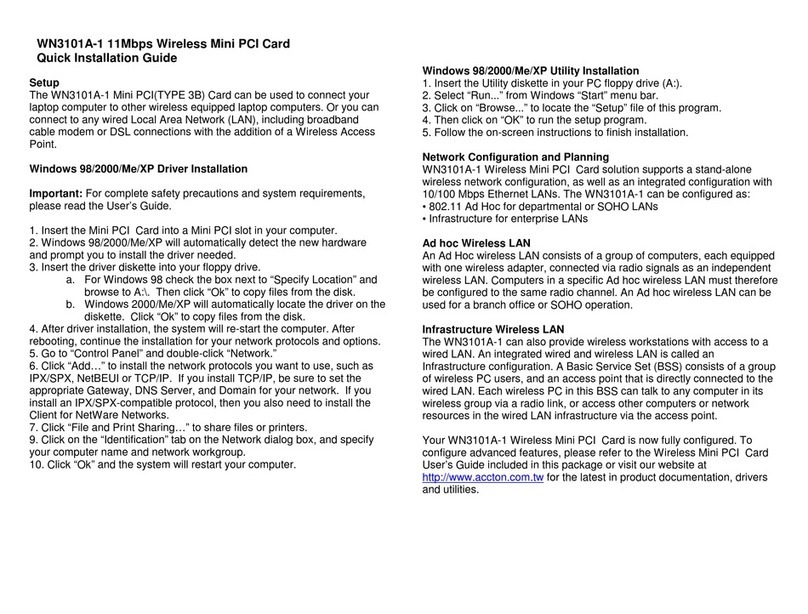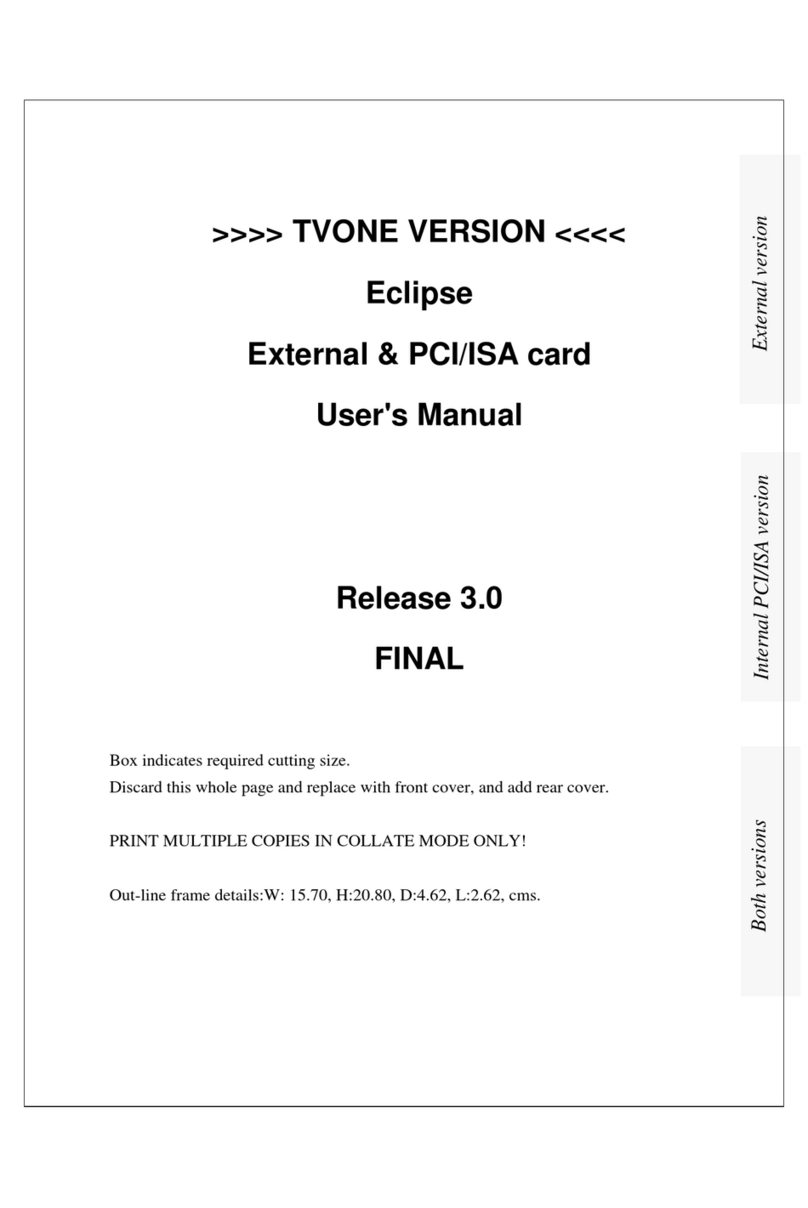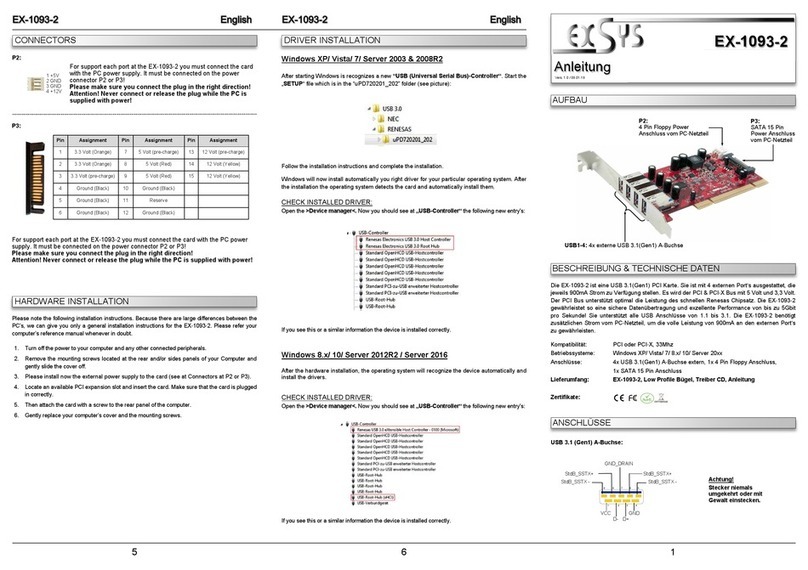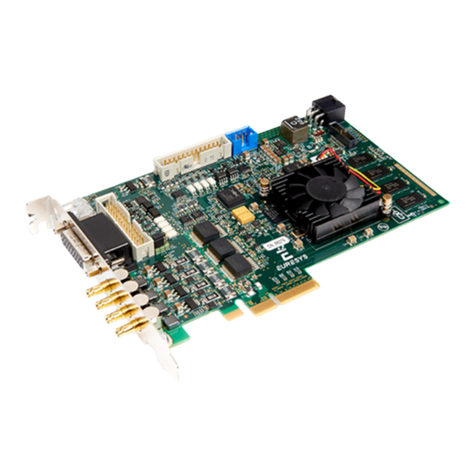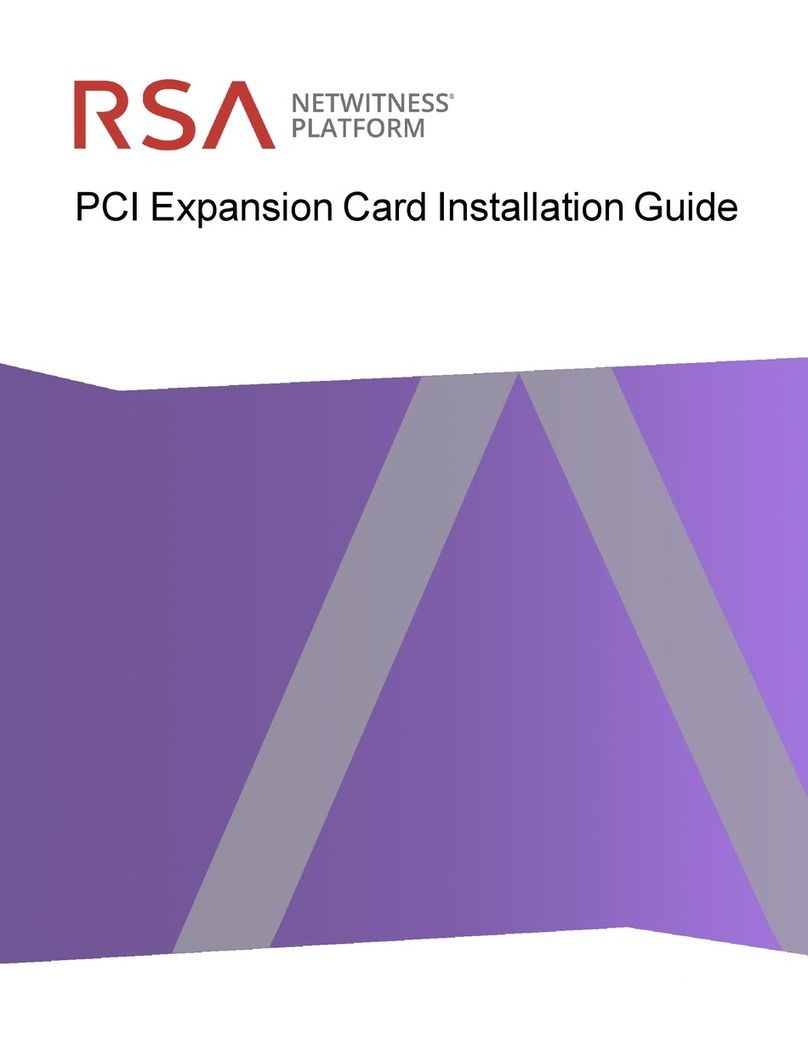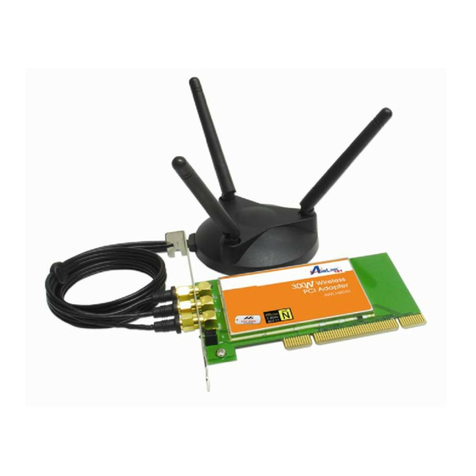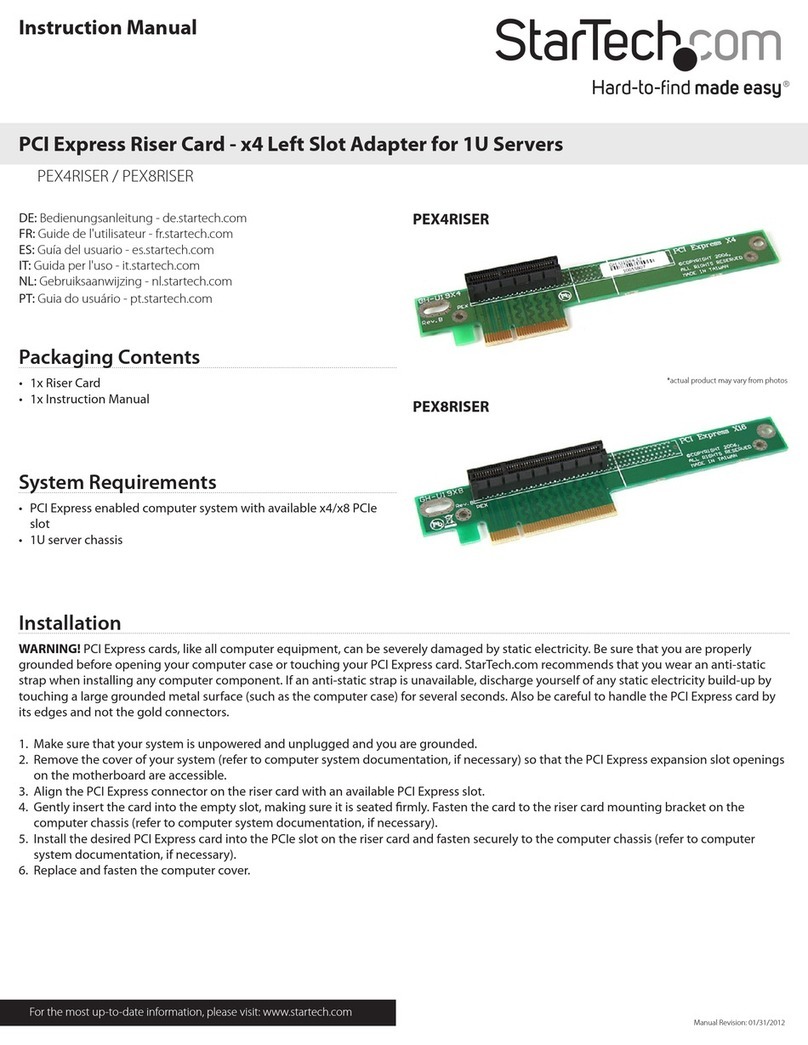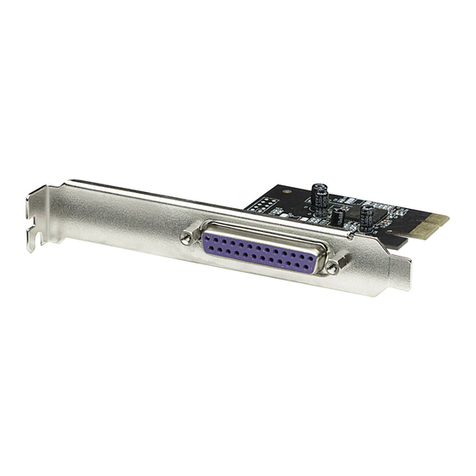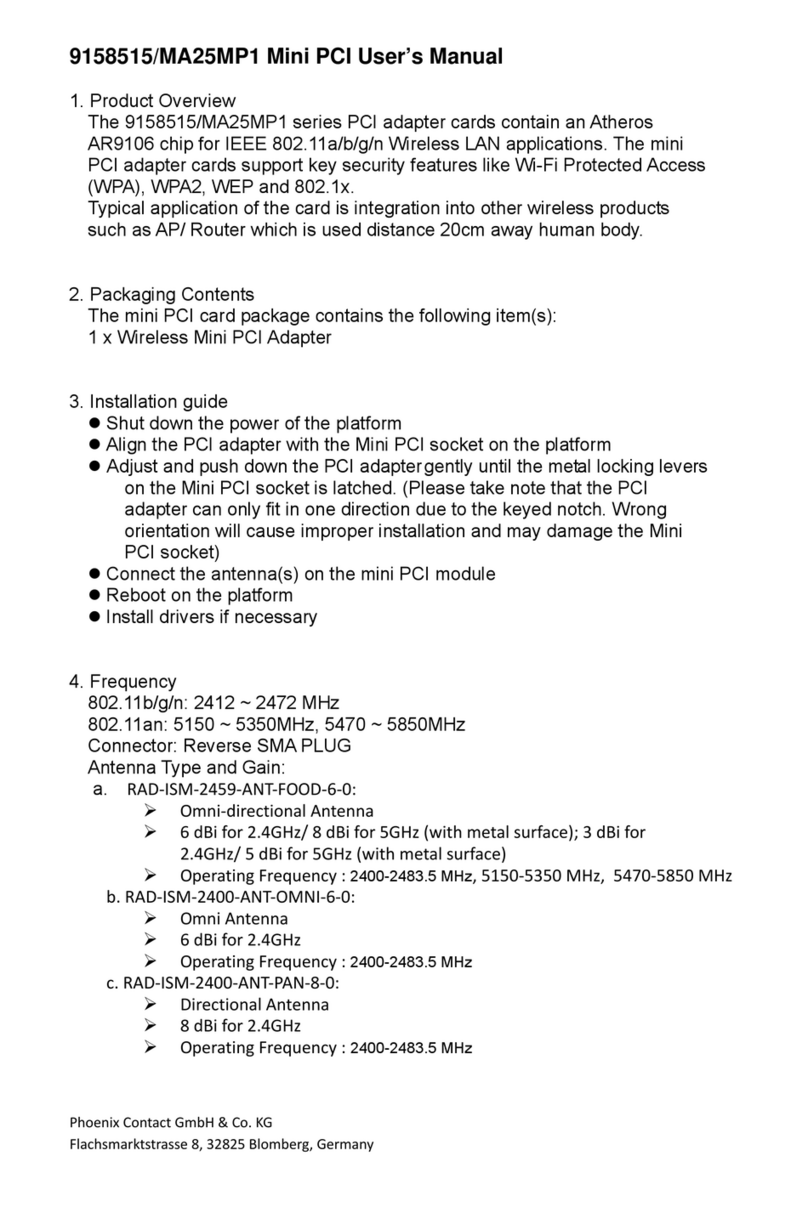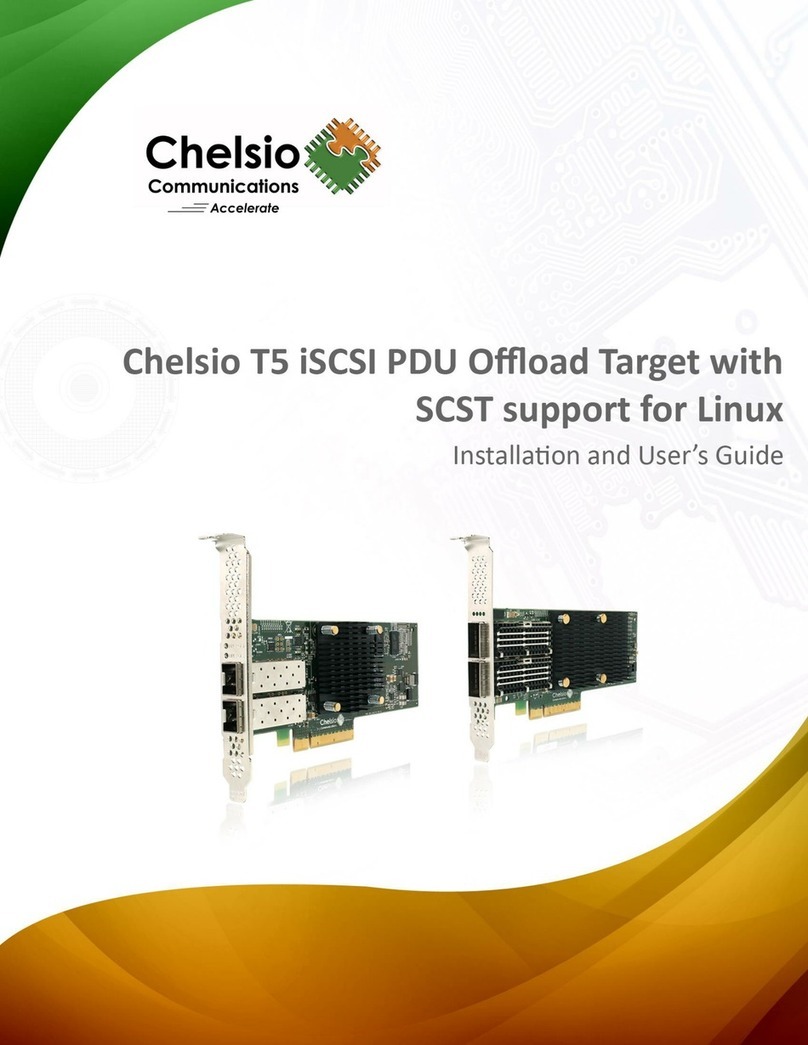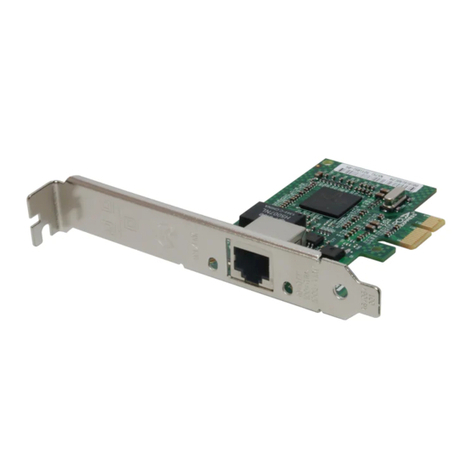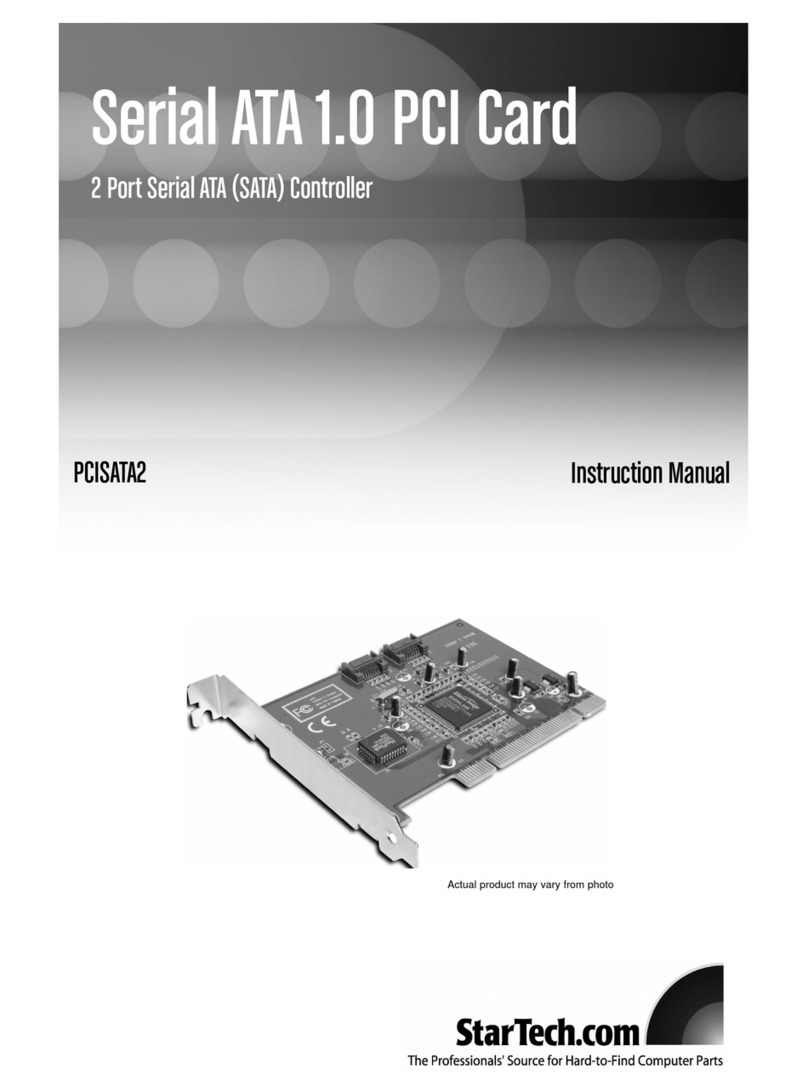Alldaq ADQ-610 cPCi User manual

Manual
Rev. 1.0 EN
ADQ-610 cPCI
Isolated 4 or 8 channel voltage output board

2
Manual ADQ-610 series Rev. 1.0
Imprint
Manual ADQ-610 series
Rev. 1.0
Date: 08/04/2016
Manufacturer and Support
ALLNET®and ALLDAQ®are registered trademarks of the ALLNET®GmbH Computersysteme. For questi-
ons, problems and product information please contact the manufacturer directly:
ALLNET®GmbH Computersysteme
Division ALLDAQ
Maistrasse 2
D-82110 Germering
Support
Email: support@alldaq.com
Phone: +49 (0)89 894 222 – 74
Fax: +49 (0)89 894 222 – 33
Internet: www.alldaq.com/support
© Copyright 2016 ALLNET GmbH Computersysteme. All rights reserved.
All information contained in this manual has been reviewed with great care. Nevertheless errors cannot
be eliminated completely. Specications and the content of this manual are subject to change without
notice.
We are appreciated for notication of possible errors.
Mentioned trademarks are registered trademarks of the respective companies.
HDMI®is a registered trademark of HDMI Licensing L.L.C.

3
Manual ADQ-610 series Rev. 1.0
Table of Content
1. Introduction ��������������������������������������������������������� 5
1.1 Scope of delivery �������������������������������������������������������� 5
1.2 Safety instructions ������������������������������������������������������� 5
1.3 Location of installation and mounting��������������������������������������� 6
1.4 Short description �������������������������������������������������������� 7
1.5 System requirements ����������������������������������������������������� 8
1.5.1 Hardware ����������������������������������������������������������� 8
1.5.2 Software ����������������������������������������������������������� 8
1.6 Programming support ���������������������������������������������������� 8
2. Initial operation ������������������������������������������������������ 9
2.1 Installing the board ������������������������������������������������������ 9
2.2 Software installation ��������������������������������������������������� 10
2.2.1 Installation under Windows������������������������������������������� 10
2.3 Test program����������������������������������������������������������� 10
2.4 ALLDAQ Manager ������������������������������������������������������� 11
2.5 Balancing/Calibration���������������������������������������������������� 12
2.5.1 Factory balancing ��������������������������������������������������� 12
2.5.2 User balancing������������������������������������������������������ 12
2.5.3 DAkkS calibration ��������������������������������������������������� 12
3. Functional groups ��������������������������������������������������� 13
3.1 Block diagram���������������������������������������������������������� 13
3.2 Analog output���������������������������������������������������������� 14
3.2.1 Voltage outputs ���������������������������������������������������� 14
3.2.1.1 Wiring ��������������������������������������������������������� 15
3.2.1.1.1 Output voltage range ����������������������������������������� 16
3.2.1.1.2 Isolation voltage��������������������������������������������� 17
3.2.1.2 External trigger D/A section ��������������������������������������� 18
3.2.2 Programming������������������������������������������������������� 18
3.2.2.1 Single value output ���������������������������������������������� 18
3.2.2.2 Timer-controlled output ������������������������������������������ 19
3.3 Bi-directional digital I/Os ������������������������������������������������ 20
3.3.1 Wiring������������������������������������������������������������� 20
3.3.2 Programming������������������������������������������������������� 20

4
Manual ADQ-610 series Rev. 1.0
3.3.2.1 Single value input/output ����������������������������������������� 20
3.3.2.2 Streaming Operation ��������������������������������������������� 20
3.3.2.3 Interrupt modes ������������������������������������������������� 21
3.3.2.3.1 Bit change �������������������������������������������������� 21
4. Appendix����������������������������������������������������������� 23
4.1 Specications ���������������������������������������������������������� 23
4.2 Pinouts���������������������������������������������������������������� 26
4.2.1 MMCX connectors (analog outputs) ������������������������������������ 26
4.2.2 HDMI connector (ST9)������������������������������������������������ 27
4.2.3 Terminal block for ADQ-610 ������������������������������������������ 28
4.3 Accessories ������������������������������������������������������������ 29
4.4 Manufacturer and support ����������������������������������������������� 29
4.5 Important notes �������������������������������������������������������� 30
4.5.1 Packaging ordinance ������������������������������������������������ 30
4.5.2 Recycling note and RoHS compliance ����������������������������������� 30
4.5.3 CE certication ����������������������������������������������������� 30
4.5.4 Warranty ���������������������������������������������������������� 30

Introduction 5
Manual ADQ-610 series Rev. 1.0 Introduction
1. Introduction
Please check the box and the content for damages and completeness before taking the device
into operation. If any fault should be detected please inform us immediately.
• Shows the packing some evidence to damaging during transport?
• Any traces of use to be recognized at the device?
The device may not be taken into operation if it is damaged. In case of doubt please contact our
technical service department.
Please read – before installing the device – this manual watchfully!
1.1 Scope of delivery
• ALLDAQ board of ADQ-610 series for CompactPCI (3 U)
• Driver software and documentation under: www.alldaq.com/downloads
Optional as bundle including:
• Special terminal block for ADQ-610 series (ADQ-TB-COAX-HDMI-HUT)
• 8 coaxial cables from MMCX male connector to MMCX male connector, length: 1 m
(ADQ-CR-MMCXM-MMCXM-8x-1m)
• HDMI cable, length: 1m (ADQ-HDMI-MM-1m)
1.2 Safety instructions
Necessarily note the following advices:
• Necessarily avoid touching of cables and connectors inside the PC with the board.
• Ensure sufcient air circulation in the CompactPCI rack.
• Never expose the device to direct solar radiation during operation.
• Never run the device near heat sources.
• Protect the device before humidity, dust, liquids and fumes.
• Don´t use the device in damp rooms and never in explosive areas.
• A repair may only be done by trained and authorized persons.
• Please note before initial operation of the device especially when using voltages greater
42 V the installation rules and all relevant standards (including VDE standards).
• Before connecting or removing cables with your board always disconnect your eld wiring
from the power supply.
• Ensure that no static discharge can occur passing the board when handling it. Follow the
standard ESD safety precautions (see also chapter 2.1 on page 9).

6 Introduction
Introduction Manual ADQ-610 series Rev. 1.0
• Never connect devices with voltage-carrying parts, especially not with mains voltage.
• The user must take appropriate precautions to avoid unforseeable misuse.
For damages caused by improper use and subsequent damages any liability by ALLNET®GmbH
Computersysteme is excluded.
1.3 Location of installation and mounting
The CompactPCI resp. PCI-Express boards of the ADQ-610 series are voltage output boards for
industrial use. Depending on the version they are for installation…
… into a free CompactPCI slot (ADQ-614/618-cPCI), or
… into a free CompactPCI Serial slot (ADQ-614/618-cPCIS), or
… into a free PCI Express slot (ADQ-614/618-PCIe).
The boards may not be taken into operation outside of appropriate PC systems. For the order
of operation on installing the devices please read the chapter „Initial operation“ in this manual
and the documentation of your PC.
The ADQ-610 series may only be used in dry rooms. PC boards are not for use with tough envi-
ronment conditions (e.g. outside). Ensure a very good ventilation. Take care for proper tting of
the connection cables. Installation has to be done in a way that the cables (PC connection and
eld wiring) are not in tension else they could release itself.

Introduction 7
Manual ADQ-610 series Rev. 1.0 Introduction
1.4 Short description
ADQ-614 ADQ-618
PC interface CompactPCI (CompactPCI Serial / PCI-Express in preparation)
Analog outputs 4 voltage outputs ±10V 8 voltage outputs ±10V
Resolution 16bit 16bit
Output rate 500 kS/s 500 kS/s
Trigger inputs 8 digital 8 digital
Digital-I/Os 1 x 8 bit port 1 x 8 bit port
Table 1: Overview ADQ-610 series
The D/A converter boards of the ALLDAQ ADQ-610 series are for high-precise voltage output,
e.g. for testing of embedded systems in the context of hardware in the loop (HiL) simulations or
for generating audio signals. Models for CompactPCI, CompactPCI Serial (in preparation) and
PCI-Express (in preparation) are available.
Depending on the version 4 or 8 analog outputs are assembled, which are electrically isolated
up to 700 VRMS between each other and towards PC ground. Each channel is equipped with a
500 kHz 16 bit D/A converter. The output voltage range covers ±10V and outputs a 0 V level
after power-up automatically. All channels can be started independently or synchronously by
software or an external trigger signal. The values can be output individually or timer-controlled.
Each analog channel has its corresponding external digital trigger input, which is isolated to-
wards PC ground and to the analog channels.
Because of the high isolation voltage of 700 VRMS a cascading of the voltage outputs is possible.
This means you can precisely output up to 80 V by cascading all the 8 channels.
The bi-directional 8bit digital I/O port and the 8 trigger inputs can be attached by the
HDMI connector at the front panel. If the digital port is congured as input the inputs can be
monitored on bit-pattern change and can generate an interrupt.
The 8 bit TTL digital I/O port can be attached by the HDMI connector at the front panel. If the
digital port is congured as input the inputs can be monitored on bit-change and can generate
an interrupt.

8 Introduction
Introduction Manual ADQ-610 series Rev. 1.0
1.5 System requirements
1.5.1 Hardware
• PC system with a current Intel®or compatible processor based on the x86(-64) architecture
• A free CompactPCI (3 U/4 HP), CompactPCI Serial (3 U/4 HP) or PCI Express x1 slot
1.5.2 Software
System Driver
• Desktop operating systems of Windows 10/8.1 / 8 /7 / Vista SP2 (32 and 64 bit)
1.6 Programming support
Software Developer Kit (SDK)
A function library (API) with example code for high-level language programming is included
Please note the corresponding help les included with the SDK.
LabVIEW Support
A library with virtual instruments (VIs) for easy access to the ALLDAQ hardware is included with
the ALLDAQ SDK.
MATLAB Support
An adapted MATLAB®interface for the ALLDAQ hardware with examples and a help le is
included with the ALLDAQ SDK.

Initial operation 9
Manual ADQ-610 series Rev. 1.0 Initial operation
2. Initial operation
2.1 Installing the board
Please read the manual of your computer prior installing the board regarding the installation of
additional hardware components.
Handling the board should be done with care to ensure that the device will not be damaged
by electrostatic discharge (ESD), mechanical stress or current surges. Ensure to take all safety
precautions to avoid an electric shock and follow the standard ESD safety precautions.
Follow this order of operation:
• Unplug the mains plug of your PC system.
• Open the housing as described in the manual of your PC system.
• Make sure that electrostatic discharge cannot occur via the board when you plug it in. At
least one hand should be grounded in order to dissipate any static charge.
• Only for PCI Express models: for the +5V supply of the board an additional supply by the
PC power supply is neccessary (current consumption without load 300 mA typ.). Connect
a free power connector of your PC (e.g. as used for powering drives) with the appropriate
„MOLEX“ male connector of your PCIe board (see the following diagram). On demand ad-
apter (cables), e. g. from 13-pin SATA power supply male connector to 4-pin MOLEX female
connector are available in specialized shops.
+5 V (PC)
GND_PC
GND_PC
n. c.
Figure 1: 5 V supply for PCI Express models
Attention: If you take the board into operation without connecting the +5V supply
the board can be irreverseable damaged!

10 Initial operation
Initial operation Manual ADQ-610 series Rev. 1.0
• Push the plug-in board carefully and with only a little force into the appropriate slot. Check
that the board is not cant and fully plugged in.
• If you want to use the additional mounting bracket for the TTL digital I/Os choose two slots
side by side for installation. Remove (if neccessary) an additional blind bracket for the slot.
• Screw all mounting brackets.
• Close the housing as described in the manual of your PC system
2.2 Software installation
2.2.1 Installation under Windows
Run the le ALLDAQDriverSetup32.exe for 32 bit systems resp. ALLDAQDriverSetup64.
exe for 64 bit systems in the target directory of your download. After successful installation the
ALLDAQ-Manager can be found in the info area of the taskbar (usually at the bottom right cor-
ner) or by the Windows Start menu. By the ALLDAQ-Manager you have access to the software
developer kit (SDK), several utility programs and help les.
2.3 Test program
Simple test programs can be found in the ALLDAQ-SDK. For each programming language a sub-
directory „Applications“ can be found with test programs for your ALLDAQ hardware.
With the ALLDAQ-Manager you can retrieve several information of the installed ADQ hardware.

Initial operation 11
Manual ADQ-610 series Rev. 1.0 Initial operation
2.4 ALLDAQ Manager
By the ALLDAQ-Manager you have central access to the parameters of the ALLDAQ driver
system, the software developer kit (SDK), software tools and help les. The ALLDAQ-Manager
can be found in the info area of the taskbar (usually at the bottom right corner of the desktop)
or by the Windows Start menu.
ALLDAQ-Manager in overview:
• Information on the installed ALLDAQ hardware in overview
• XML export of the driver conguration for archiving and support
• Tool for interactive illustration of the pin-assignment with the possibility to generate a PDF
• Tool for user balancing
• Convenient access to the software developer kit (SDK) for high-level language program-
ming with examples and simple test programs
• Quick access to the help les
Figure 2: ALLDAQ-Manager and SDK programs

12 Initial operation
Initial operation Manual ADQ-610 series Rev. 1.0
2.5 Balancing/Calibration
By the ALLDAQ-Manager you can select which balancing data record (factory or user balancing)
should be activated when booting the computer. You can change the setting via the ALLDAQ-
Manager.
2.5.1 Factory balancing
The ADQ-610 series will be balanced before delivery. The balancing data will be stored into an
EEPROM. If a re-balancing should be neccessary please contact our service department. For
contact details see chapter 4.4 on page 29.
2.5.2 User balancing
To compensate e. g. voltage drops caused by the eld wiring you can balance the analog out-
puts by yourself. The application-specic balancing data can be stored beside the factory ba-
lancing data into the EEPROM.
Please follow the procedure below:
1. Power-on the system with the ADQ-610 series.
2. Connect the part of the eld wiring you want to include into the balancing.
3. Output a constant voltage with the ADQ-610 and measure the voltage by a high-precision
voltmeter (e. g. multimeter). Make sure, that the voltmeter has a higher accuracy than the
respective board of the ADQ-610 series.
4. Run the balancing tool in the ALLDAQ-Manager and follow the procedure as described in
the appropriate help le.
Note: Repeat the balancing for each channel separately.
Figure 3: Wiring for balancing
2.5.3 DAkkS calibration
We collaborate with independent test laboratories accredited by the Deutsche Akkreditierungs-
stelle GmbH (DAkkS). On-demand please contact our service department. For contact details
see chapter 4.4 on page 29.

Functional groups 13
Manual ADQ-610 series Rev. 1.0 Functional groups
3. Functional groups
3.1 Block diagram
ADQ-614/618
0110101001101110 D
A
AO_0+
AO_0-
D
A
ST1
ST8
Isolation
Isolation
TRIG_AO0
TRIG_AO7
VCC_OUT (+5 V)
DIO_7…0
GND_PC
TTL-I/Os
(1 x 8 bit Port)
AO_0..7
Ext. Trigger
DIO_7..0
GND_TRIG
ST9
AO_7+
AO_7-
0110101001101110
Address-/
data bus
Interrupt
Timer
&
Control logic
Timer
&
Control logic
Value FIFO
Value FIFO
Trigger logic
Molex connector
(+5V / +12V for PCIe)
CompactPCI (Serial) interface / PCI-Express interface
HDMI connector
Bit-change
Figure 4: Block diagram ADQ-610 series
• 8 isolated voltage output channels
• 8 isolated external digital trigger inputs
• 8 bi-directional TTL digital I/Os

14 Functional groups
Functional groups Manual ADQ-610 series Rev. 1.0
3.2 Analog output
Nyquist´s sampling theorem (Oversampling)
Nyquist´s sampling theorem basically applies also to analog output. This means, that the output
rate for a periodic signal, whose maximum frequency component should be fPmax, must be at
leasttwiceashigh,i.e.2•fPmax or higher. In practice we recommend to choose an output rate
by the factor 5 or 10 higher than fPmax to replicate the signal form truely. This issue is also called
"oversampling".
Example:
The max. frequency component fPmax. (1/tP) of the signal frequency should be 10 kHz. The out-
put rate fS(1/tS)shouldbeatleast5•10kHz=50kHz.
Figure 5: Nyquist-Shannon sampling theorem
3.2.1 Voltage outputs
Depending on the version the ADQ-610 series provides 4 or 8 analog outputs, which are elec-
trically isolated up to 700 VRMS between each other and towards PC ground. Each channel is
assembled with a 500 kHz 16 bit D/A converter. The output voltage range covers ±10 V and
outputs a 0 V level after power-up automatically.
The values can be output individually or timer-controlled. The output can be started by software
or an external trigger signal either independently per channel or several channels synchronous-
ly. Each analog channel has its corresponding external digital trigger input, which is isolated
towards PC ground and to the analog channels.
Because of the high isolation voltage of 700 VRMS a cascading of the voltage outputs is possible.
This means you can precisely output up to 80 V by cascading all the 8 channels.

Functional groups 15
Manual ADQ-610 series Rev. 1.0 Functional groups
ADQ-614 ADQ-618
PC interface CompactPCI (CompactPCI Serial / PCI-Express in preparation)
Analog outputs 8 voltage outputs 8 voltage outputs
Output voltage range ±10 V
Resolution 16bit
Output rate 500 kS/s
Output current ±15 mA per output
Capacitive load max. 1 nF
Total harmonic distortion (THD) at 10 VPP,f=100kHz(sine):-96dB
Total accuracy ±2 LSB (±0.6 mV)
Table 2: Overview analog outputs
3.2.1.1 Wiring
When connecting the eld wiring note that the inner conductor AO_x+ drives the positive
potential and the outer conductor AO_x– the negative potential.
We recommend to use high-quality coaxial cables alternativly from MMCX male connector to
MMCX male connector (Art. No. 122585) or from MMCX male connector to BNC male connec-
tor (Art. No. 122586) in combination with the special terminal block for the ADQ-610 series
(Art. No. 127389).
Figure 6: Wiring example with MMCX coaxial cable and special terminal block (g. similar)
With the special terminal block for the ADQ-610 series the analog outputs can be either con-
nected via 8 BNC female connectors or Phoenix type clamps, the digital I/Os, trigger inputs and
auxiliary voltage via 2 x 10-pin Phoenix type clamps.

16 Functional groups
Functional groups Manual ADQ-610 series Rev. 1.0
3.2.1.1.1 Output voltage range
The output voltage range is ±10V. The load for each channel is 15mA max. The capacitive load
at the output should not exceed 1 nF to ensure a stable signal. Individual modications of the
output stage on request.
Figure 7: Output stage
The Total Harmonic Distortion (THD) denes the ratio between the accumulated harmonics
power PHto the power of the basic oscillation P1. The THD of the ADQ-610 output stage is
specied with -96 dB and refers to a sine oscillation of 100 kHz with an amplitude of 10VPP.
Tip:
Cascading of the voltage outputs is possible. This means you can precisely output up to 80 V by
cascading the 8 channels.

Functional groups 17
Manual ADQ-610 series Rev. 1.0 Functional groups
3.2.1.1.2 Isolation voltage
Note, that the maximum voltage potential UB+ UOUT this is the sum of the common-mode
voltage and the output voltage may not exceed the isolation voltage of UISO=700VRMS. Else
the board can be be damaged irreversible.
Figure 8: Isolation voltage

18 Functional groups
Functional groups Manual ADQ-610 series Rev. 1.0
3.2.1.2 External trigger D/A section
The ADQ-610 series provides 8 external digital trigger inputs which are isolated from PC ground
and against the analog outputs. With it you can trigger each D/A channel independently or
synchronously. Depending on conguration the output operation can be started or stopped by
a rising, falling or any edge.
The digital trigger inputs (TRIG_AOx) are designed for a TTL high-level of +5V. They use GND_
TRIG as common ground reference.
The trigger inputs can be attached by the HDMI connector ST9 at the front panel. A suitable
terminal block is available as an option (see chapter 4.2.3 on page 28).
Figure 9: Wiring of the external trigger inputs
3.2.2 Programming
For programming the analog output there is a differentiation between the so-called "Single
value output" and the "Timer-controlled output". All channels can be started or stopped inde-
pendently or synchronously by software or an external trigger signal.
3.2.2.1 Single value output
This operation mode is for output of single values without xed time reference.
Depending on conguration the output can be started or stopped by software or by a rising
and/or falling edge at the corresponding external trigger input (TRIG_AOx).
Please note the order of operation as described in the online help.

Functional groups 19
Manual ADQ-610 series Rev. 1.0 Functional groups
3.2.2.2 Timer-controlled output
With the timer-controlled output you can output signal curves continuously. The so-called value
FIFO is a fast buffer memory per channel which enables a continuous operation of all channels
at maximum output rate.
Figure 10: Timer-controlled output
Please note the order of operation as described in the online help.

20 Functional groups
Functional groups Manual ADQ-610 series Rev. 1.0
3.3 Bi-directional digital I/Os
The ADQ-610 series provides one bi-directional 8 bit wide digital I/O port (DIO_7..0). If the
digital port is congured as input the pins can be monitored on bit-change and can generate
an interrupt event.
The port can be attached by the HDMI connector ST9 at the front panel. A suitable terminal
block is available as an option (see chapter 4.2.3 on page 28).
Note: After power-up all ports are congured as input.
3.3.1 Wiring
When wiring digital I/Os take care that the TTL level is met (see specications on page 24)
and that a reference to PC ground (GND_PC at ST9) must be established. The max. output
current is IO=24mA.
Figure 11: Wiring of the digital I/Os
3.3.2 Programming
The bi-directional 8 bit digital I/O port (DIO_x) can be programmed by port as input or output.
After power-up the port is congured as input.
3.3.2.1 Single value input/output
In this operation mode one digital value can be read resp. output port-wise. The port direction
is dened by software.
Note: A port congured as output can be read back also!
Follow the order of operation as described in the online help.
3.3.2.2 Streaming Operation
Depending on the port direction the software-controlled streaming operation enables a conti-
nuous reading of digital inputs resp. the output of a bit pattern stream.
Follow the order of operation as described in the online help.
Table of contents
Other Alldaq PCI Card manuals

